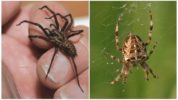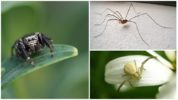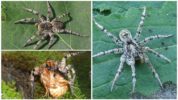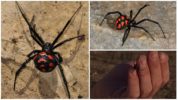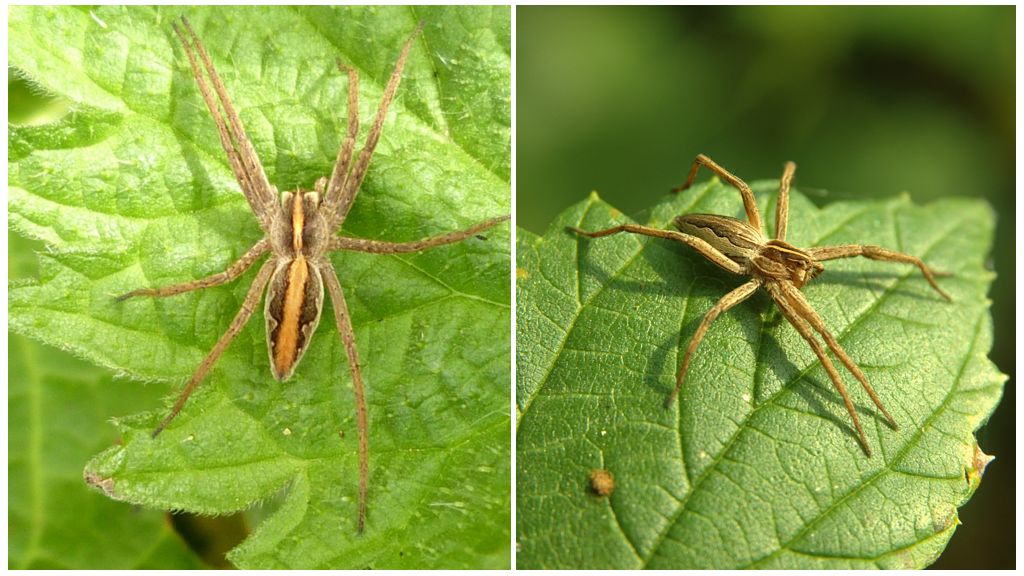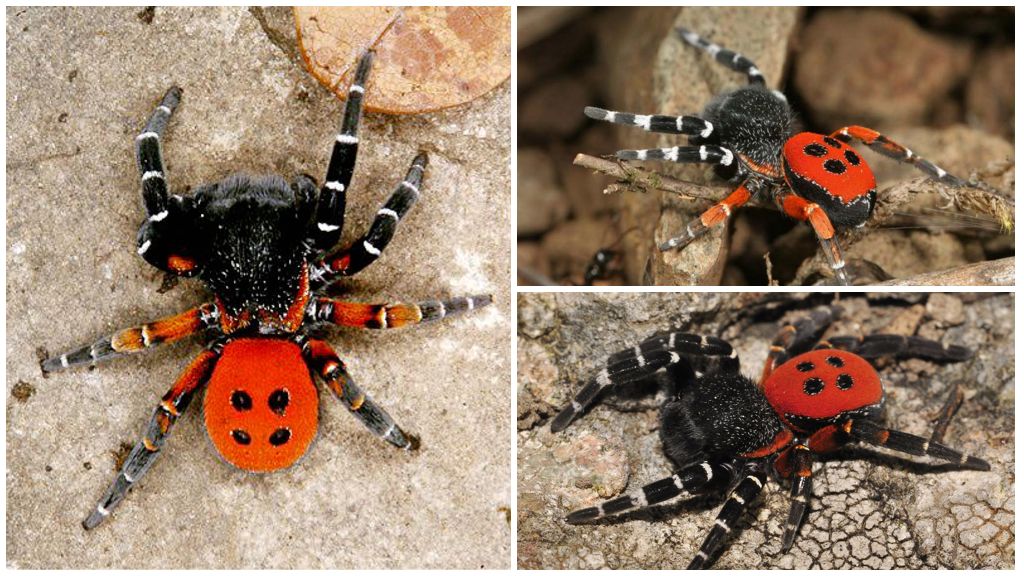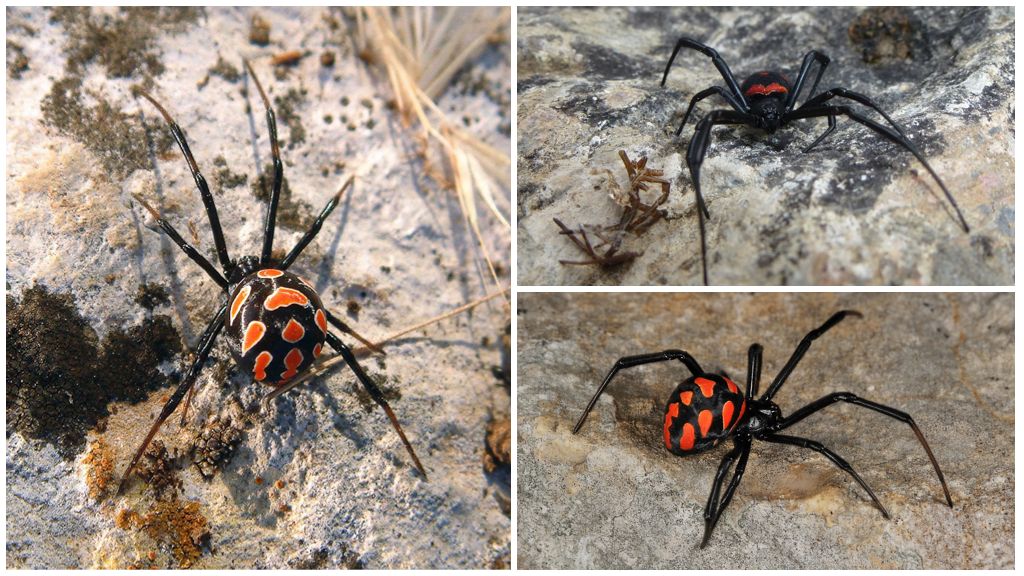- Brownie spider and common cross
- Spiders of Ukraine
- Tarantula
- Karakurt
To avoid unpleasant consequences for health, each person who sees spider in your room or on the road in the forest, it is better to know in advance how dangerous it is and whether it can be touched. To understand which spiders of Ukraine pose a threat to human life and which do not, you should understand their types and differences from each other
Non-hazardous species
Biological classification spiders belong to insectivorous arthropods. Their diet consists of what gets into their carefully woven web. For hours, they can sit in wait, waiting for them to fall into the trap. fly, mosquito or a bee. Such spiders can be seen in the apartment, and on the garden plot, and in the forest or in the meadow.
Important!
Many people because fear of spiders they try to kill them quickly, not realizing that they maintain a kind of balance in the natural environment, actively destroying harmful insects.
Below are photos with names, a description of the appearance and diet of existing arthropod species.
House spider
The most common type of spider in Ukraine, living next to people, according to the classification refers to the Voronkov family. House spiders are common throughout the world. Adult size can reach 1.2 cm; females are usually larger than males. Body color - yellow-brown with a pattern.
Prefers house spider settle in residential and utility rooms in the house or in extensions. Its main diet consists of cockroaches, mothflies bedbugs and other domestic insects. In nature, this species lives in grass, in fallen leaves, in the depths of cracks in the bark of trees.
Interesting!
According to popular belief, the arachnid inhabitant in the house can bring financial prosperity. However, according to scientists, the appearance of a large number of spiders in the house signals excessive reproduction of insects.

Common Cross
The name of the spider comes from its color - there are yellow spots on the abdomen, which merge into the shape of a cross. In total there are 1 thousand types of crosses, the most common of them is ordinary. The size of the female reaches 2.5 cm, males - 1 cm.
Interesting!
Biologists consider them the greatest experts in web weaving - they are able to weave a hunting net with a diameter of up to 1m. Then the cross is seated in the middle or on the edge of the web and awaits prey. His voracity is 7-8 insects per hunt.
Horse spider
This variety of arthropods prefers not to weave, but lies in wait for its prey in secluded places. When she appears horse spider makes an instant jump on the victim’s back. To return then to the starting place, he attaches himself with a sticky thread.
Females and males of a spider-horse are the same in size - up to 6 mm. They also have an original physique that allows them to turn their heads up. This helps them to successfully catch insects flying overhead. According to biologists, they are also able to distinguish between ultraviolet light, thanks to special marks on the body.
Side-walker spider
Another variety that prefers to wait for the prey to appear is flower. bokokhod spider. Its size is only 1 cm. But it has a diverse body color and is able to change it depending on the situation: from white to yellow or brown (if it lives among trees). Thanks to this ability, side walkers are almost invisible in nature.
Interesting!
They walk sideways, like crabs, for which they got their name.
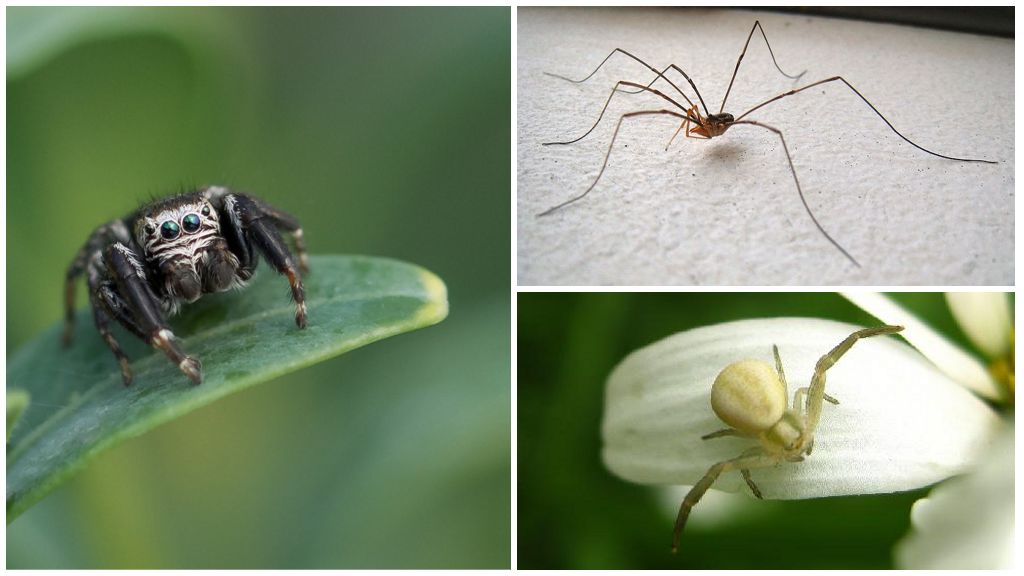
Haying spider
Its other names are centipede and window spider. It differs from other species in very long thin legs that extend directly from the round abdomen. Their number can be 6-8 pieces, length - up to 5 cm.
For catching prey hayers they make a web, after the insect gets there, the spider quickly injects a paralyzing poisonous substance into it.
On a note!
Long-legged people like to settle near people, mainly in window frames and darkened corners, hanging upside down in them.
Poisonous spiders of Ukraine
Knowing those types of arthropods that are dangerous to humans and can harm their health will help to avoid most of the troubles.
The most famous poisonous species of spiders, common in the forest and steppe areas of Ukraine, are tarantula, karakurt, “black widow” and argiope.
Tarantula
The largest representative of arthropods, it lives in the steppes, deserts and forest-steppe zone of Ukraine. The number of species in the world tarantulas exceeds 900, however, in the southern regions you can often find the South Russian or Central European tarantula, whose name is popularly misgir.
Its size can reach 3.5 cm, and the body is covered with dense hairs of brown-brown color in different shades, the abdomen is black. The paws are also shaggy, which helps to defend against enemies.
Daytime tarantulas usually live in burrows that they dig themselves. Their depth sometimes reaches 60 cm, at the end there is a room.
At night, the spider usually goes hunting, preferring to catch insects. By nature, it is not aggressive, but a person can be bitten for self-defense.

On a note!
In preparation for the attack, the tarantula becomes in a fighting stance, raising its front legs and leaning on its hind legs, and then makes a jump and bites. Feels like spider bite similar to a hornet. The consequence is painful sensations (numbness and fever) and inflammation of the surrounding soft tissues. The skin usually turns yellow, and the color lasts 2 months. Allergic reactions that threaten a person's life are possible.
Black Widow in Ukraine
These arthropods got their name from the ability of a female to eat a male who fertilized her after mating. They are distinguished by strong poison and inconspicuous appearance. Dwell black widows in burrows and crevices in the ground, in ravines, hollows of trees, they can penetrate into people's homes.
On a note!
The size of an adult does not exceed 2 cm, the body color is black and shiny, on the back there is a noticeably reddish or pink spot, similar to an hourglass. Under this color, you can also find a spider of a variety of steotode, but the spot in it has an orange or white color.
In recent years, such spiders began to appear in the Donetsk region, migrating from more southern regions. They weave hunting nets along which they move with the help of curved bristles on short legs resembling a scallop. Such an arthropod can attack only if it is stepped on or pressed against, females are considered more aggressive.
The negative effects of black widow spider venom are quite strong:
- erythema at the site of a bite (redness in the form of a circle);
- muscle cramps and pain;
- the appearance of salivation and sweating;
- a jump in blood pressure (hypertonic), tachycardia;
- shortness of breath and vomiting, pain in the abdomen and head;
- renal failure may be noted;
- anxiety and disturbance of the nervous system.
Be sure to consult a doctor on time, because a severe allergic reaction is possible, especially in children and the elderly.

Karakurt
The most poisonous and dangerous spider, the action of its poison exceeds 15 times in comparison with a rattlesnake bite. Karakurt belong to the genus of black widows and are common in the southern steppe regions of the Black Sea and Crimea. During the summer heat, they often migrate to the north, so they can be found among the spiders of the Donbass, in the Lugansk and Kharkov regions.
Karakurt is small in size: females - up to 2 cm, males - up to 7 mm. The color of the body of the spider is black in adults, and in young ones there are bright red spots on the abdomen. A person can be attacked only in a life-threatening situation.
The consequences of a bite of karakurt:
- shortness of breath, choking;
- disorders of the cardiovascular system, arrhythmia;
- convulsive phenomena.
On a note!
According to statistics, mortality from the bite of this poisonous spider is 2-4% of cases.
Argiope or zebra
Other names for the arthropod are “zebra spider” and “wasp”, which are given for the specific color of its abdomen in white-yellow-black stripes. The size of males is 7 mm, females - up to 1.5 cm. For argiopes, weaving of the web in zigzags is characteristic.
Argiopes found in the rocks on the Kerch Peninsula (Crimea). Initially, their habitat was forest-steppe and steppe zones of the European part of the country, where there is a suitable hot and dry climate. However, over time, argiopes began to migrate to the northern regions: they used to live in the Kherson and Zaporizhzhya regions, and now there are such spiders in the Lugansk, Dnepropetrovsk and Kirovograd regions.
Argiope spider venom usually causes slight inflammation and passes without consequences during treatment, therefore it is less dangerous for humans compared to previous species.
